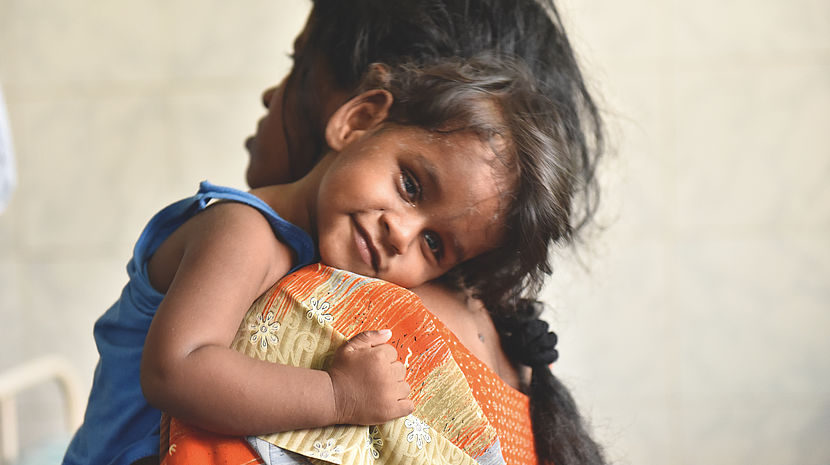05.03.2015 Women and Girls with Disabilities

In line with the lunch event with women Ambassadors on Monday, March 2nd and the upcoming 59th session of the Commission on the Status of Women (CSW) taking place 9-20 March, I’m sharing information on women and girls with disabilities and the UN. The following information stems from Mary Keogh’s CBM paper on women and girls with disabilities, additional information from Orsolya Bartha and Maryanne Diamond from the International Disability Alliance, and a small part from me. Thanks, everyone. Enjoy and disseminate this important information widely!
Facts and challenges for women and girls with disabilities
- Increased risk of violence and abuse: women and girls with disabilities can be at risk of violence and abuse by a caregiver, who is also responsible for providing them with assistance and support with daily living. Also women and girls with disabilities institutionalized as a result of their disability are at an increased risk of violence and abuse, due to the closed nature of their living space.
- Lack of access to justice: There is a perception that women with disabilities (particularly those with an intellectual disability/learning disability) are not seen as ”credible witnesses.”
- Prejudice and discriminatory attitudes in sexual health, reproductive rights and the right to family life: Decisions about reproduction and family planning being made by a third party in the ”best interests of women with disabilities” and in some circumstances without the consent of the woman or girl with a disability
- Minimal participation in political and public life: Additional barriers are encountered by women with disabilities, which include legal capacity (being considered not capable to vote or to hold office due to having specific disabilities, e.g., intellectual and psycho-social disabilities) and/or lack of access to polling stations and inaccessible voting material.
Beijing Platform for Action
Twenty years ago, UN Member States recognised the situation of women and girls with disabilities when adopting the Beijing Platform for Action. In the original Platform for Action, women with disabilities were mentioned in eight of the twelve areas of concern. In particular, women with disabilities are specifically mentioned in the areas of education, health and violence against women. Today, while celebrating the 20th anniversary of the Beijing Platform of Action, the global report on “The Review and appraisal of the implementation of the Beijing Declaration and Platform for Action and the outcomes of the twenty-third special session of the General Assembly E/CN.6/2015/3” again recognises that: “Overall progress in the implementation of the Platform for Action has been particularly slow for women and girls who experience multiple and intersecting forms of discrimination. … such as women with disabilities.”
The report further recognises that women with disabilities are particularly vulnerable to poverty, because they encounter specific challenges in accessing adequate and regular sources of income owing to restrictive immigration laws or working environments that are ill adjusted to their needs. Also, the report identifies access to schools and adequate healthcare services as challenges for women and girls with disabilities, although notes there is an increasing recognition of the rights of women and girls with disabilities. Despite this, States report challenges in implementing measures to address the needs of women and girls with disabilities. Moreover, Member States are beginning to recognise that non-communicable diseases (often chronic) also cause disabilities and the prevalence of disability is higher among women, particularly impoverished and older women, compared to their male counterparts. Finally, the report importantly recognises that little attention has focused on targeted services for marginalized groups of women, including women with disabilities, indigenous women and migrant women.
Recommendations for UN Women:
- Consider establishing a disability team (like UNICEF) that focuses on the meaningful inclusion of disability issues within existing reporting and programming at all levels of the entity.
- Reflect and tackle the situation of women and girls with disabilities during the next Strategic Plan of UN Women, as well as strengthen the implementation of the post-2015 development agenda with a particular focus on establishing key strategic action and indicators on women and girls with disabilities.
- Establish a two-year technical advisory group consisting of women experts with disabilities to advise, be available for consultation and organise disability rights awareness training for its staff at headquarters and country level as capacity development. Moreover, we recommend the development of a guidance note and mandatory training package for staff on how to include women and girls with disabilities in their work to be developed in collaboration with the technical advisory committee.
- Address that UN Women’s consultative forum of 21 international women’s rights advocates and experts on gender issues has no experts on disability nor has a person with a disability ever been included.
- Introduce a specific and mainstreaming focus on women and girls with disabilities within UN Women’s trust fund on ending violence against women and respectively on gender, as well as in country programs.
- Promote a holistic approach to reduce all forms of violence, including forced sterilization and institutionalization.
- Allocate specific budget lines for disability mainstreaming and the inclusion of women and girls with disabilities in all sectors of the organisation’s work and to implement specific accelerated mainstreaming works to redress previous significant oversight of disability.
Recommendations for Member States:
- Ensure that the Sustainable Development Goal on gender must be implemented and monitored for its progress with a focus on the most marginalized women and girls, such as those with disabilities. We recommend the adoption of a global indicator explicitly referencing women and girls with disabilities and ensuring that data is disaggregated by disability, age and sex.
- Consider adopting a resolution at the Commission on the Status of Women in 2016 on the “Empowerment of women and girls with disabilities” in order to address the challenges and to make recommendations.